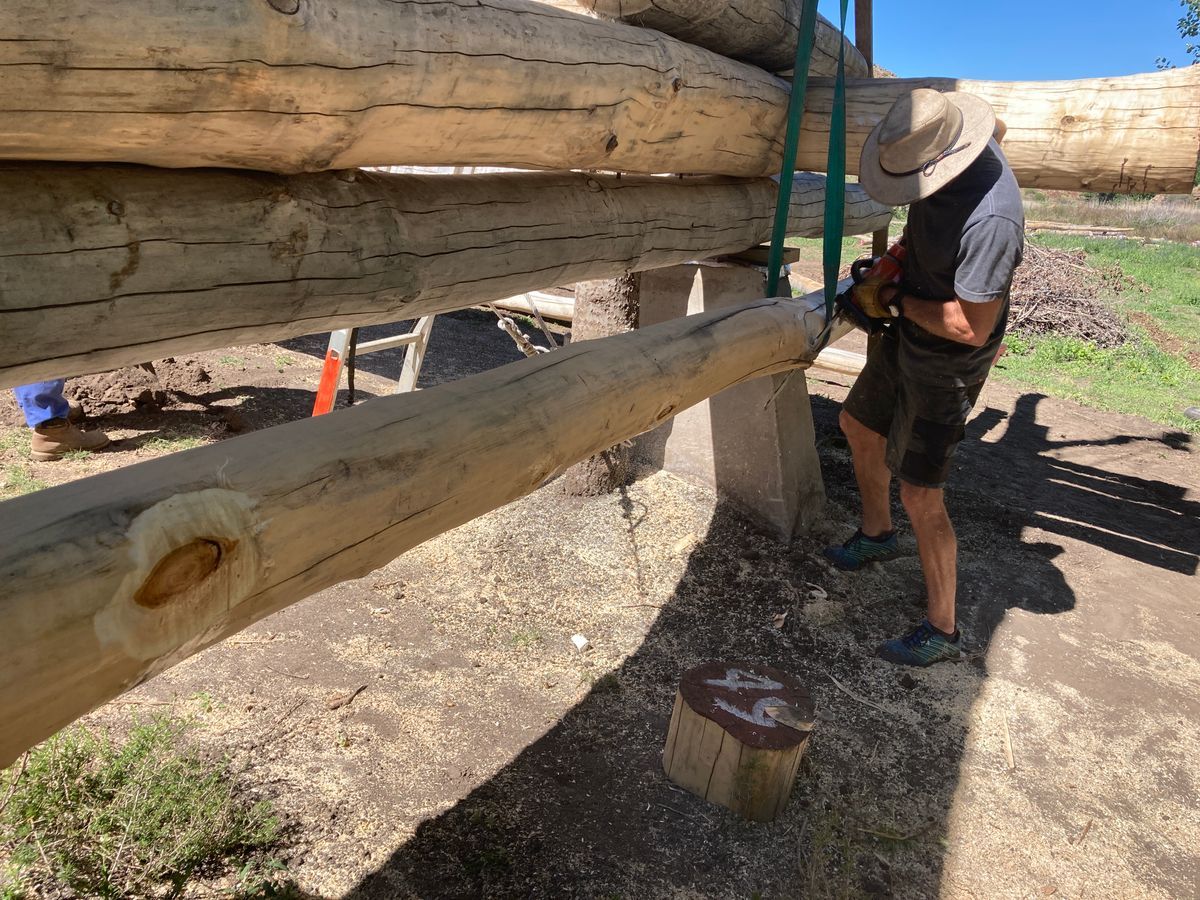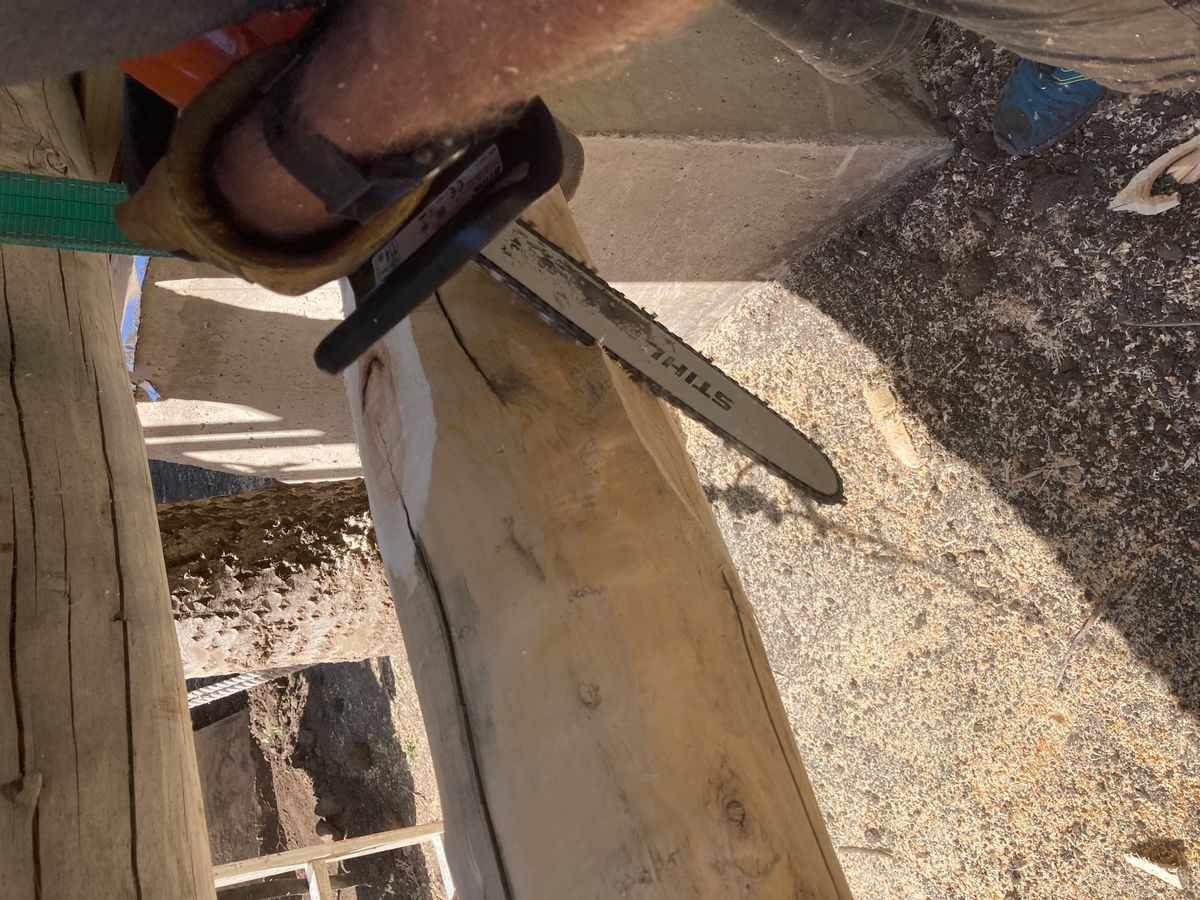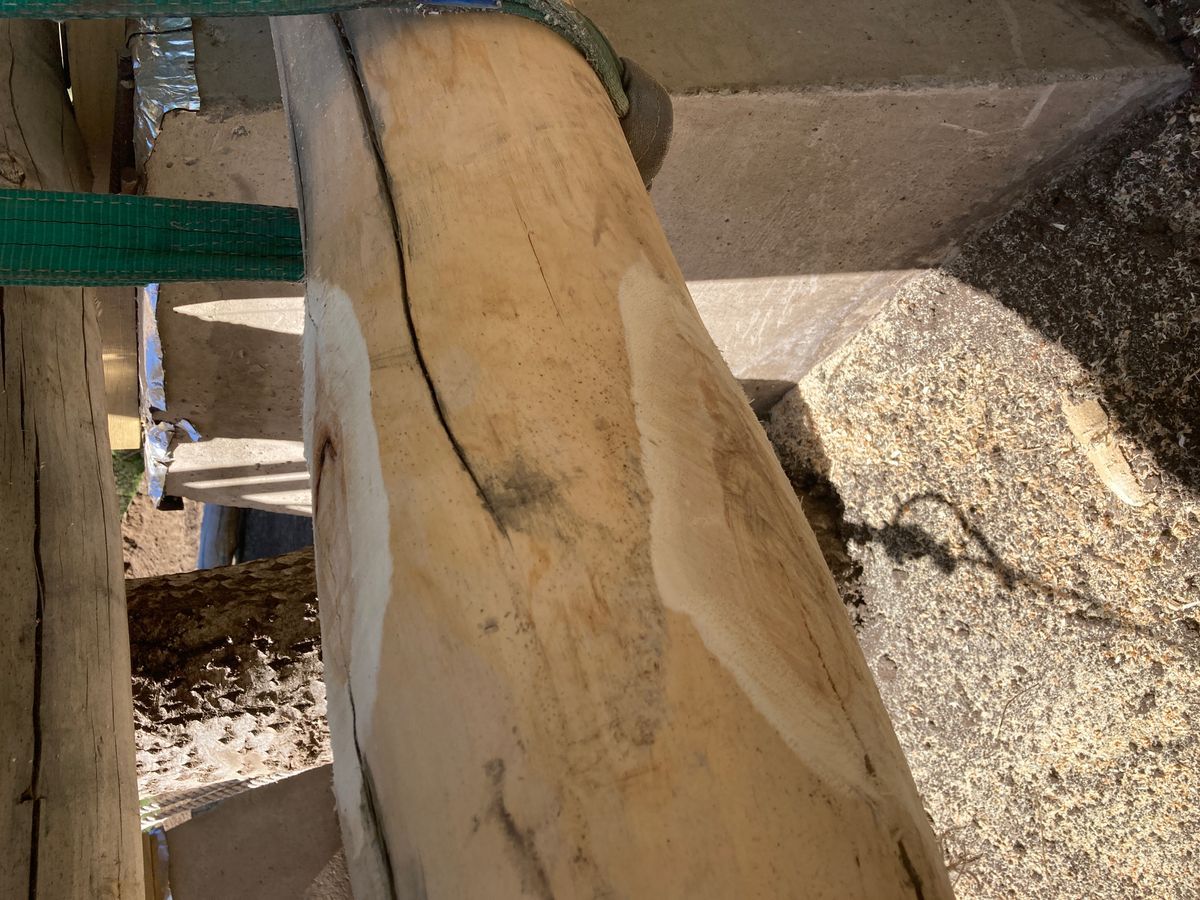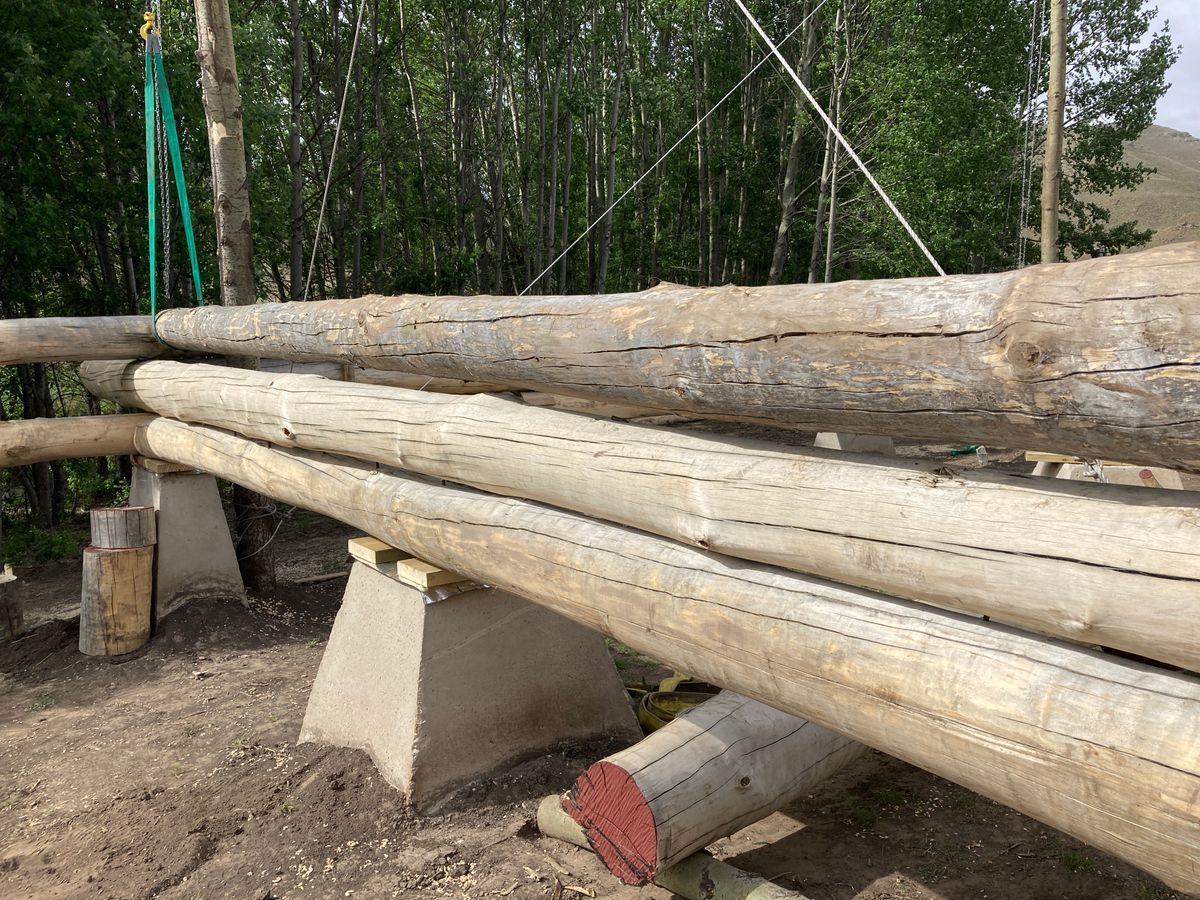We planned the height of the walls for the log cabin to be about 4 meters – that is, 3 meters to the ceiling and floor where the loft was going to be, and another meter to where the roof trusses will be fastened. This translated to about 15 layers of logs, which meant using a grand total of 60 logs – 30 about 9 meters long and 30 about 12 meters long.
Placing the first layer of logs took some time as it involved some accurate measuring and geometry work to determine where to drill the holes so that they coincided with the metal rods that were embedded in the respective pillars. We hoisted the logs onto the pillars with our slings and chain block, did our mathematics, drilled the holes and then rotated the logs 180 degrees and lowered them over the metal rods, the ends of which we then hammered flat, parallel to the grain of the log. A 50 cm rod was also hammered into the butt end of the adjacent log to ensure stability and strength of each layer of 4 logs.
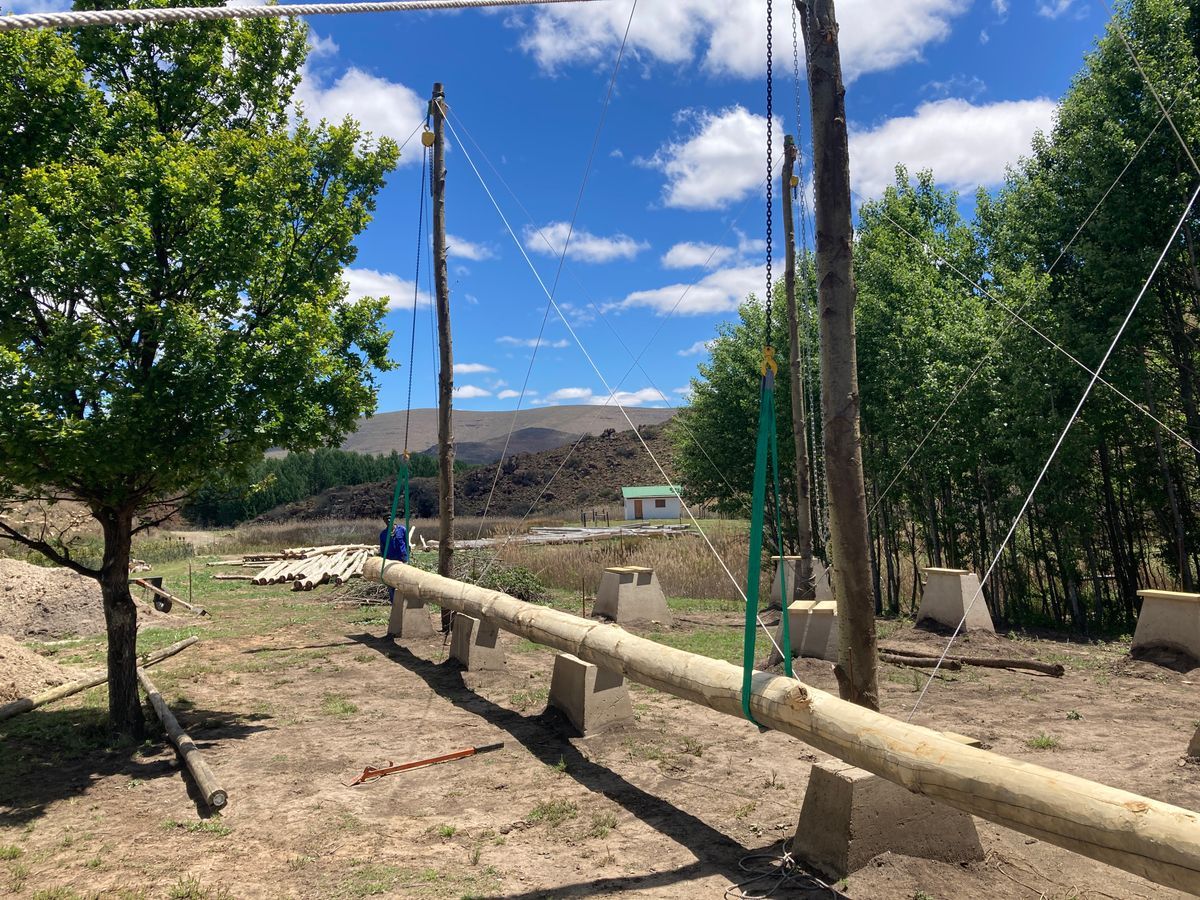
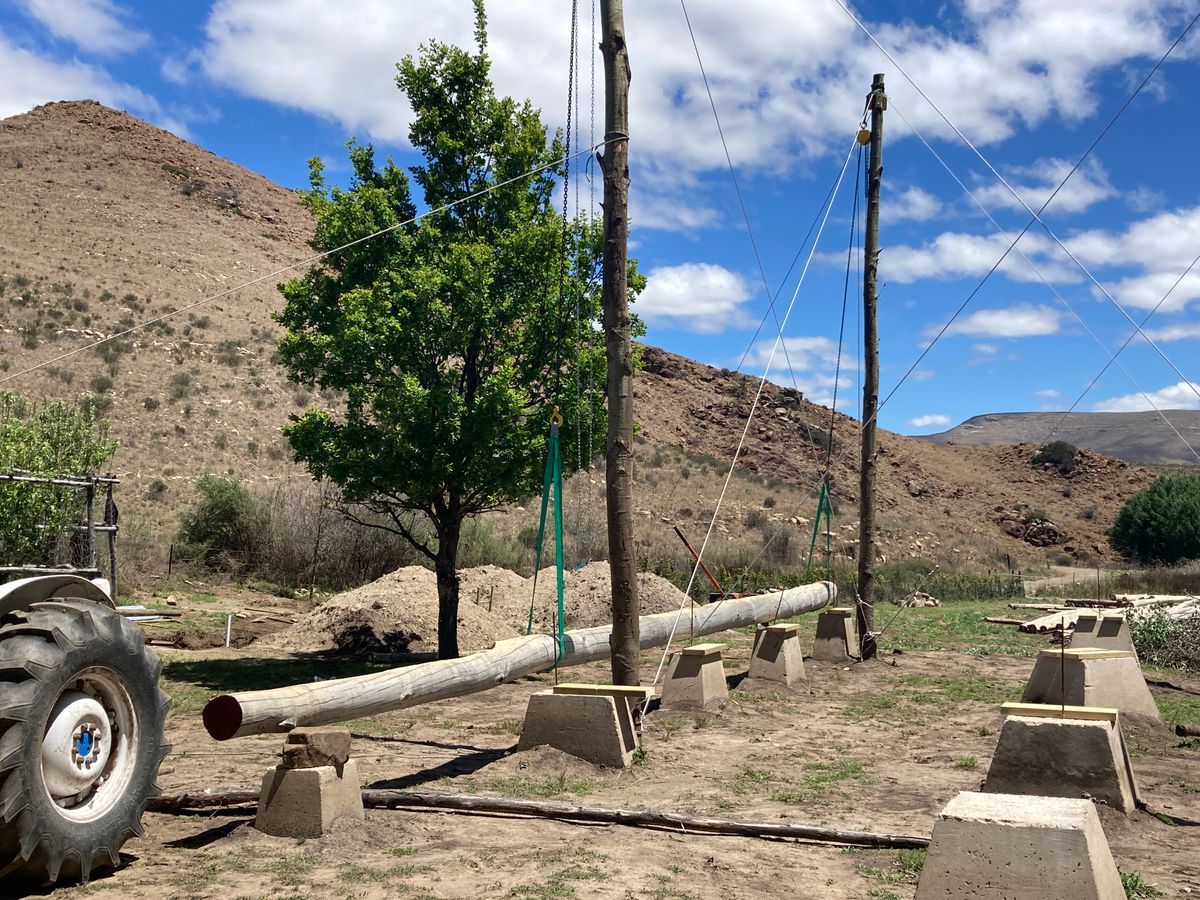
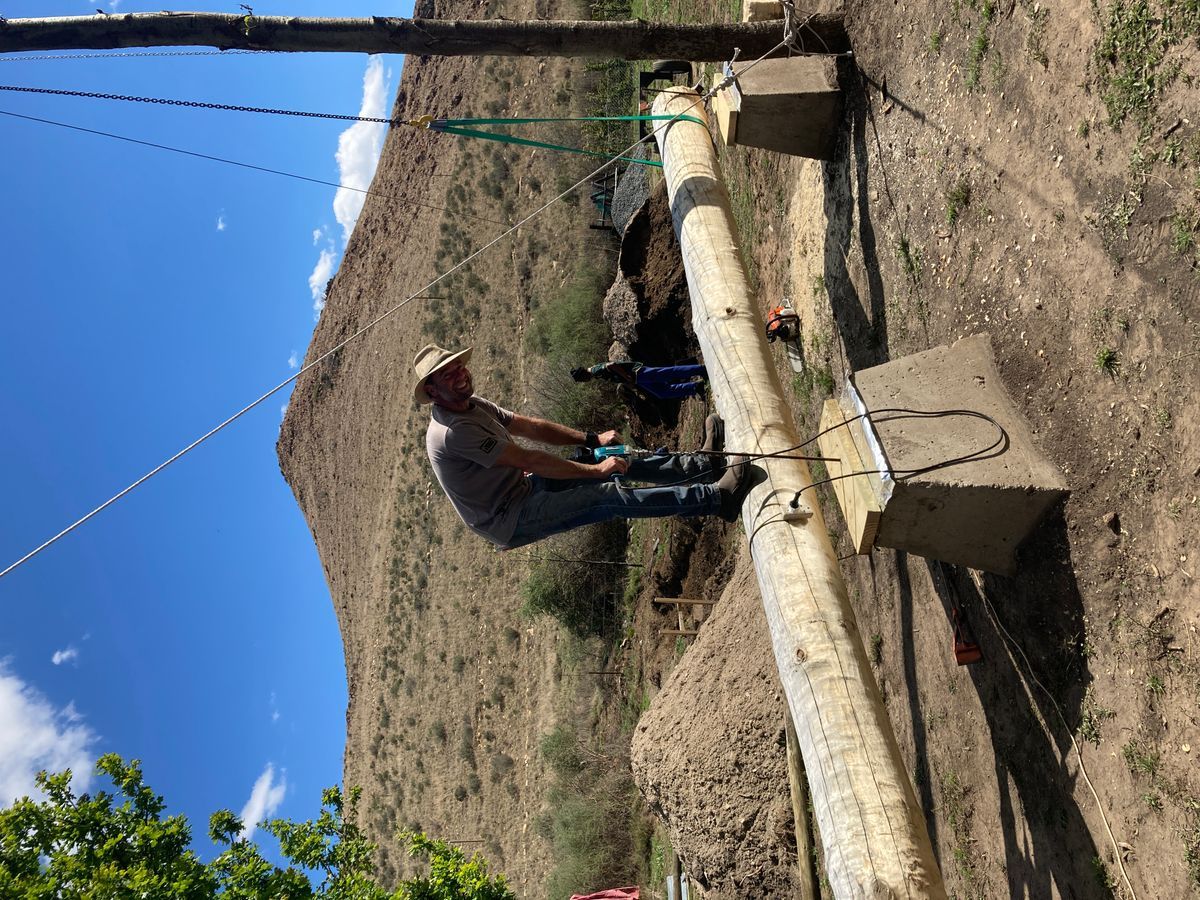
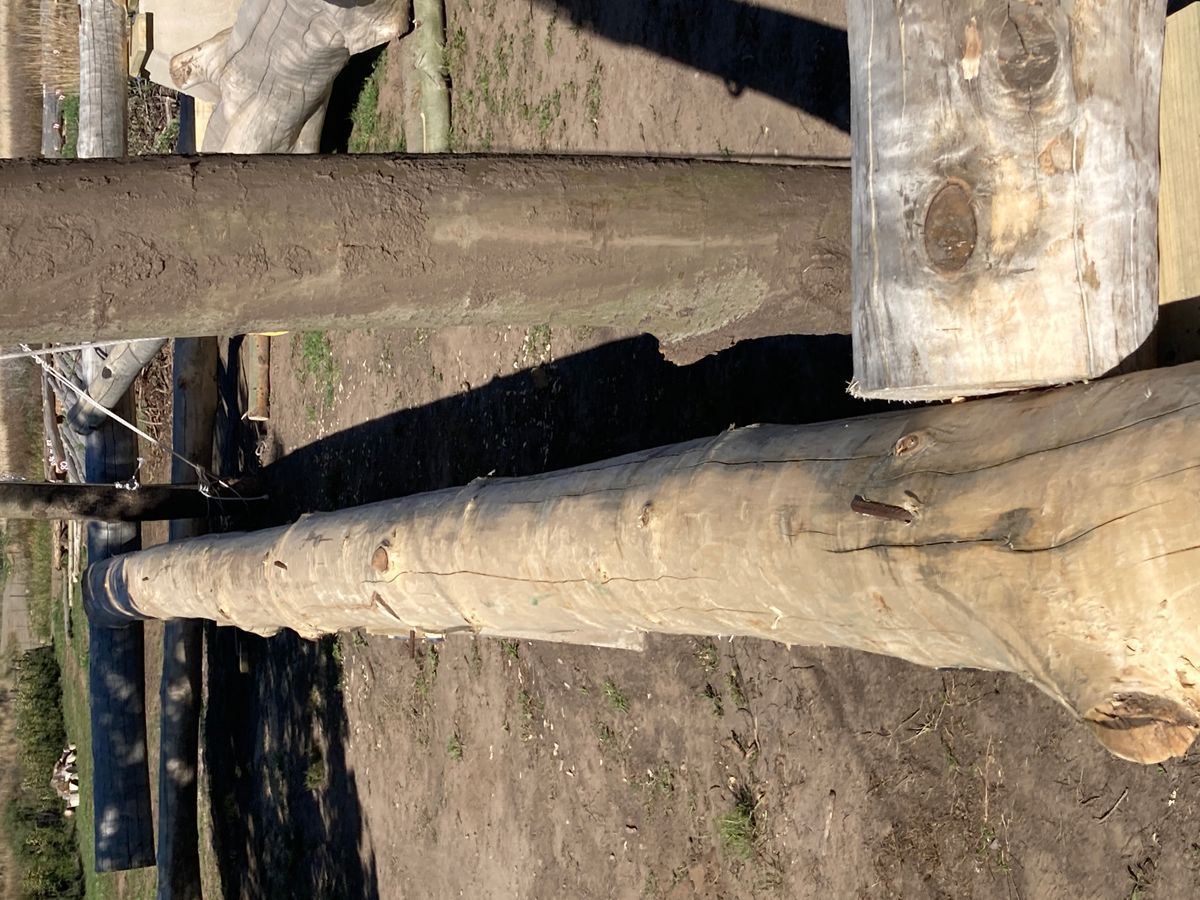
We used the butt and pass method of placing each layer of logs, following a spiral sort of pattern as we gained altitude.
In between the pillar and the log we had placed pieces of 45mm treated timber for the log to avoid any moisture that could accumulate on the pillar and touch the log. Beneath that we placed strips of bitumen that will keep the bugs away.
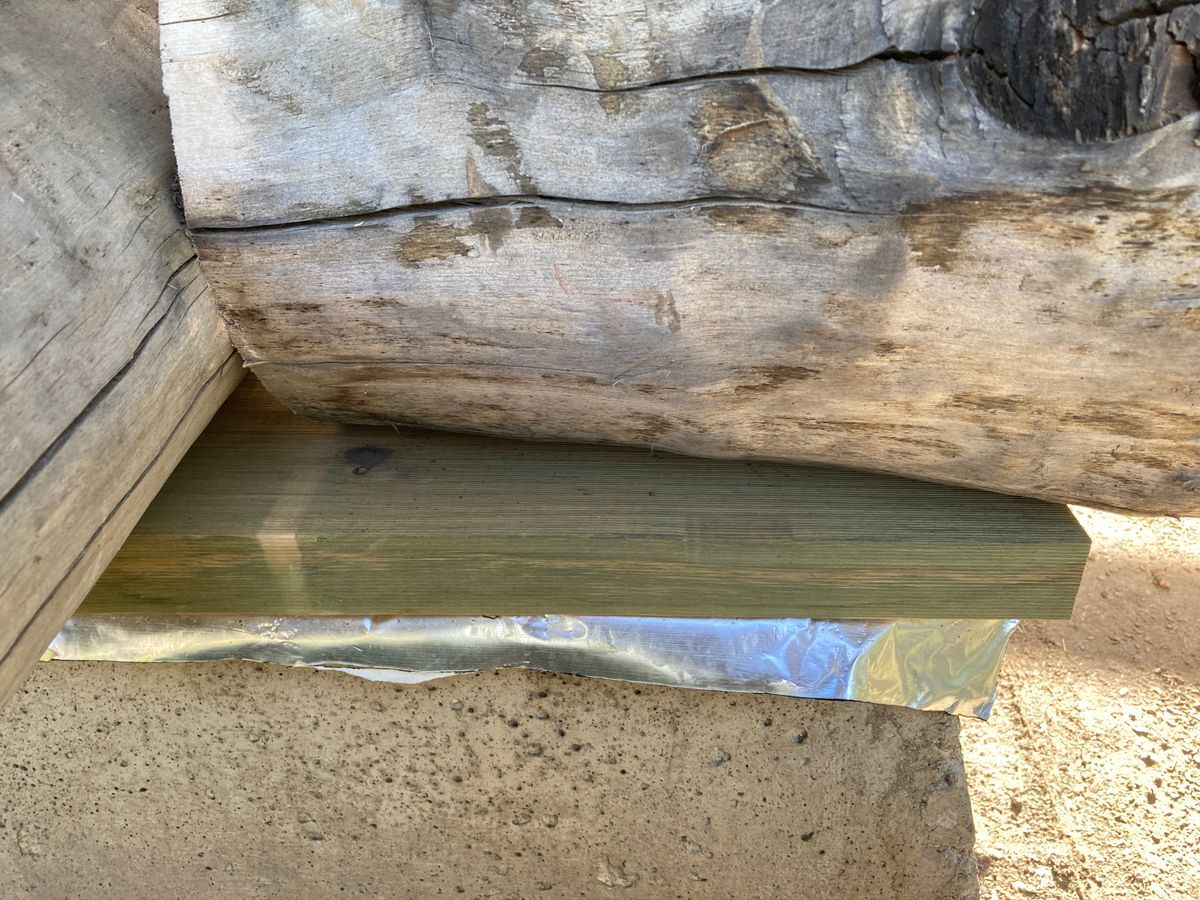
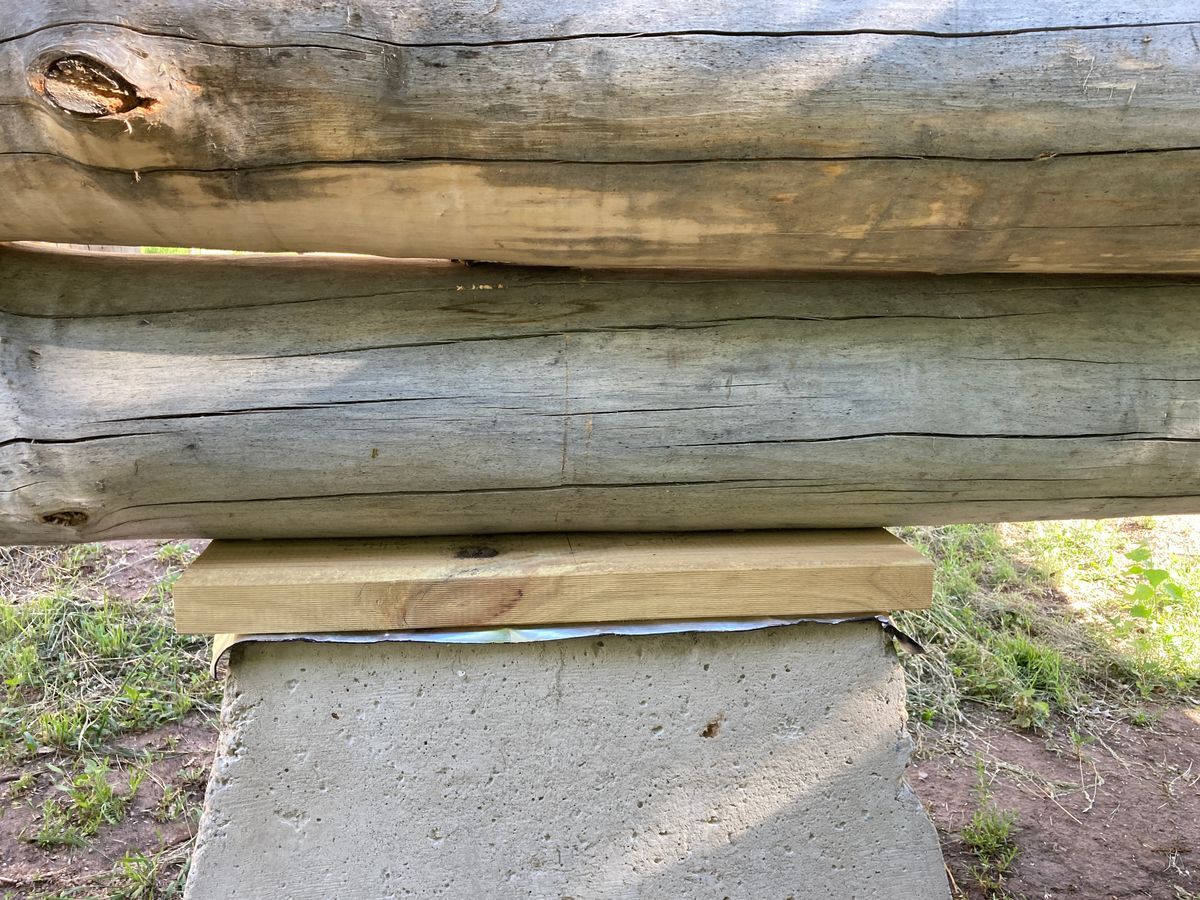
The audit and numbering of logs came in very handy in selecting our logs. It was very clear to us that we needed to be quite strategic in our selection as our logs were anything but straight and smooth. For those logs that were wonky and had a bend or two, we cut the log into two and “joined” it again, in this way eliminating the bend. We made sure that this cut coincided with the position of a window or door. In other words, we would be cutting out this join in any case to place either a window or door. For those logs that were too short, we followed a similar strategy, where we cut the log into two and then “stretched” it strategically to create the space for our planned windows or doors. The purists will tell you that this is perhaps not ideal, but we had to do with what we had…..ie poplar logs, and not straight and smooth pine logs, or evenly machined logs.
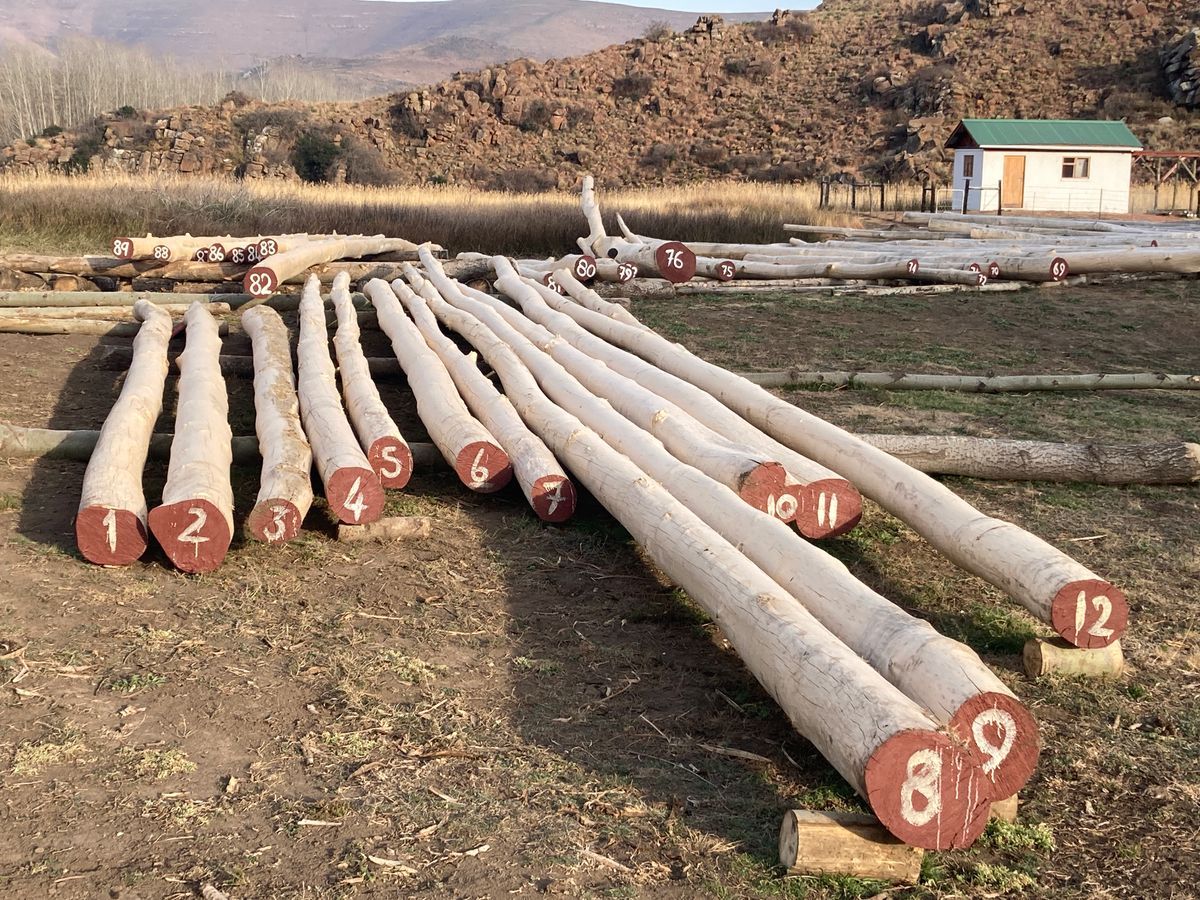
For those logs that had excessive knobbly protrusions such as big knots or ends of branches, we used our chainsaw to smoothen these out.
